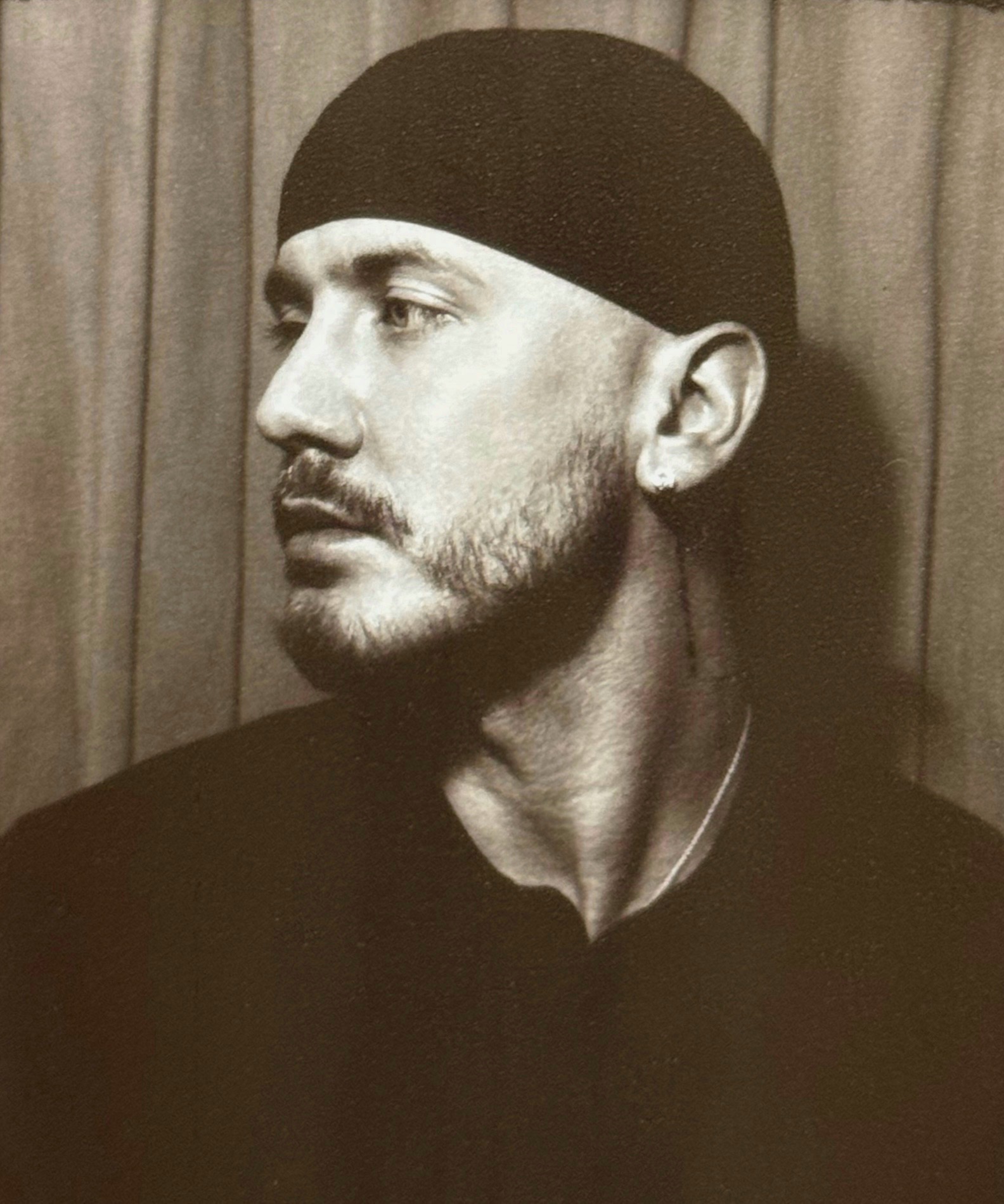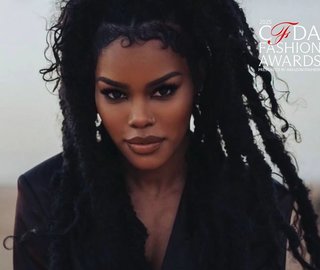For the past decade, Poland-born and Paris-based Pat Boguslawski has established himself as one of fashion’s leading movement directors, orchestrating everything from high-drama runway moments to dynamic editorial shoots with an intuitive, collaborative flair. The trained dancer and former model honed his creative eye on set alongside celebrated photographers like Mert & Marcus, Nick Knight, and Alasdair McLellan. Now, with a nudge from legendary makeup artist Pat McGrath, he’s stepping behind the camera himself – debuting as a photographer with a Vogue Japan beauty editorial starring supermodel Natalia Vodianova. This milestone first shoot, styled by longtime collaborator, Alexis Roche, marks a full-circle moment and the start of a new chapter in Boguslawski’s multifaceted creative journey. Models.com caught up with Boguslawski to discuss why the time felt right to add “photographer” to his résumé, how his movement-direction background influenced his approach on set, and what he envisions for this next evolution of his career.
Your first photography editorial – a Vogue Japan story with Natalia Vodianova – is a major milestone. What made you decide that now was the right time to step behind the camera, and how did it feel to see your images published?
Over the past 10 years, I’ve had the privilege of working alongside some of the most inspiring photographers in the industry, from Patrick Demarchelier and Mert & Marcus to Nick Knight and Craig McDean. Being on set with such creative visionaries shaped my eye and deepened my love for photography. For the last few months, I quietly explored that passion, shooting my friends in my living room or on the streets, learning, and observing. A few months ago, I was sitting with Pat McGrath when she asked to see my personal work. After looking through the images, she said, “You’re really good — you need to become a photographer.” That moment changed everything for me. It finally felt like its time — and I’m excited to share this new chapter of my journey behind the camera
In our last conversation, you mentioned using a lot of intuition and treating your work as a collaboration. Did you carry that same philosophy into your first shoot as a photographer? How did your background in movement direction influence how you guided Natalia and captured those moments through your lens?
For me, everything begins with intuition. For my first editorial, I wanted to challenge myself by exploring something new, capturing a beauty story through my own lens. I felt it was time to step into new creative territory, to see how I could translate emotion, light, and texture in my own way. The last 10 years working as a movement director taught me how to communicate with models and bring out the best in them. That experience made the transition to directing as a photographer feel very natural — guiding, connecting, and creating an atmosphere where the energy flows effortlessly.
Working with an industry legend like Natalia on your first shoot must have been inspiring, and maybe a little intimidating. How did you approach directing someone of her caliber for this project, and what was the dynamic like on set, given her vast experience in front of the camera?
Working with Natalia made the process effortless, as she’s incredibly talented and fully committed to giving her best. I had never met her before, so I was curious to see how our dynamic would unfold. But the moment she walked on set, she gave me the biggest hug and said how excited she was to shoot together. From that instant, I knew we were going to have fun. The connection and trust between us allowed me to direct with confidence and capture moments that felt truly alive.
As a movement director, you usually support a photographer or designer’s vision, but this time, you were the one calling the creative shots. How did stepping into the lead creative role as the photographer compare to what you’re used to? Were there any surprises or new challenges for you being behind the camera versus directing from the sidelines?
Not really. I was very excited that finally I can be fully in control. I’ve been thinking about becoming a photographer for a few years. Over the past two years, I’ve spent a lot of time learning about cameras, lighting, and studio equipment. I knew that when the moment came to shoot, I wanted to truly understand what I was doing on set. That technical knowledge gave me confidence and allowed me to focus fully on creativity once I finally picked up the camera.
Your career has spanned dancer, model, movement director, and now photographer, so you have naturally worn many hats. What has exploring all these different roles taught you about expressing creativity? Do you feel the fashion industry is becoming more open to multi-hyphenate creatives like yourself who don’t stick to just one title?
Life is fluid and constantly changing, and we evolve through the experiences we gather along the way. Working with so many incredible photographers over the past ten years has been the best education I could have ever received, better than any photography school. I’ve learned by observing, listening, and being part of the creative process at the highest level. I don’t think the fashion industry is fully open to that idea yet, as it often takes time for people to recognize and embrace a new perspective. I believe that everything I’ve done until now has been preparing me for this moment — to finally become a photographer and create my own projects. Every experience, every collaboration, and every lesson along the way has led me here, shaping how I see, feel, and capture the world around me.
The Vogue Japan shoot reunited you with stylist Alexis Roche – the very person who helped connect you with John Galliano years ago. Did having a longtime collaborator like Alexis on set help ease your transition into another creative space? What was it like coming full circle and working with him again, now with you as the photographer?
Having Alexis with me on set was amazing; he and John are like family to me. We share the same taste, the same eye for beauty, and most importantly, we just feel good around each other. Alexis was the one who discovered me and introduced me to John Galliano, so it felt only right to have him there for this special moment.
You’ve said before that you never want to be over-prepared and prefer to “go with the flow” on set. When it came to planning your own shoot, did you stick to that spontaneous approach, or did you find yourself mapping out details more carefully since you were also responsible for the final images? How did you adapt your creative process to this new role?
Pat McGrath, Eugene Souleiman and I exchanged a few calls about the concept before the shoot. We discussed the glam, and I shared my ideas about the lighting and overall vision. But with artists like them, true masters of their craft who also love to experiment and have fun, nothing is ever completely set in stone. We knew the real magic would happen once we were all together on set.
I recall you’re not a big fan of heavy mood boards, often relying on a single image or a song for inspiration. What was the inspiration or concept behind this Vogue Japan editorial, and how did you develop the visual story for Natalia’s shoot? Did you have a clear vision going in, or did the concept evolve organically as you worked?
I was very much inspired by classic beauty stories from the ’60s and ’70s. I’ve always loved the strong shapes and simplicity of that era, the way light was used to sculpt and celebrate natural beauty. I’m drawn to timeless imagery, so with this story, I wanted to capture a similar feeling — something elegant, pure, and enduring.
Now that you’ve added “photographer” to your résumé, what’s next? Can we expect more Pat Boguslawski-shot editorials in the future? How do you envision balancing this new photography pursuit with your ongoing work as a movement director?
I’m entering a new chapter as a photographer, one where I can create more editorials and visual stories that truly reflect my own vision. I want to direct and explore the ideas I couldn’t pursue while working under other photographers or directors. I’m excited by the challenge of shaping poses, movement, and energy through my own lens, and bringing my creative perspective fully to life. I’ll still collaborate with some of my favorite photographers when the project feels right, and of course, I’ll continue directing fashion shows. There’s nothing quite like the rush and adrenaline of a live show, and that world will always inspire me.






